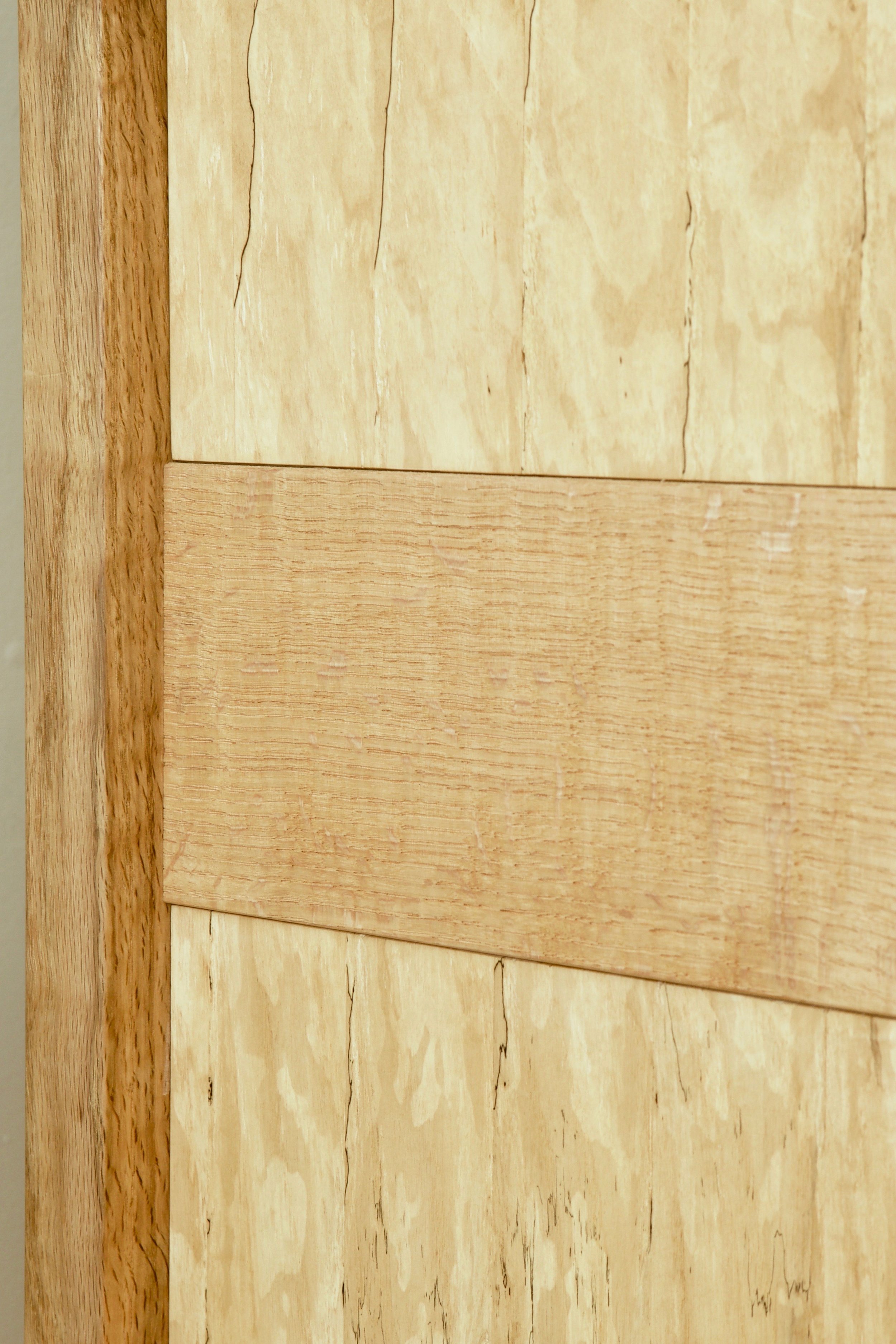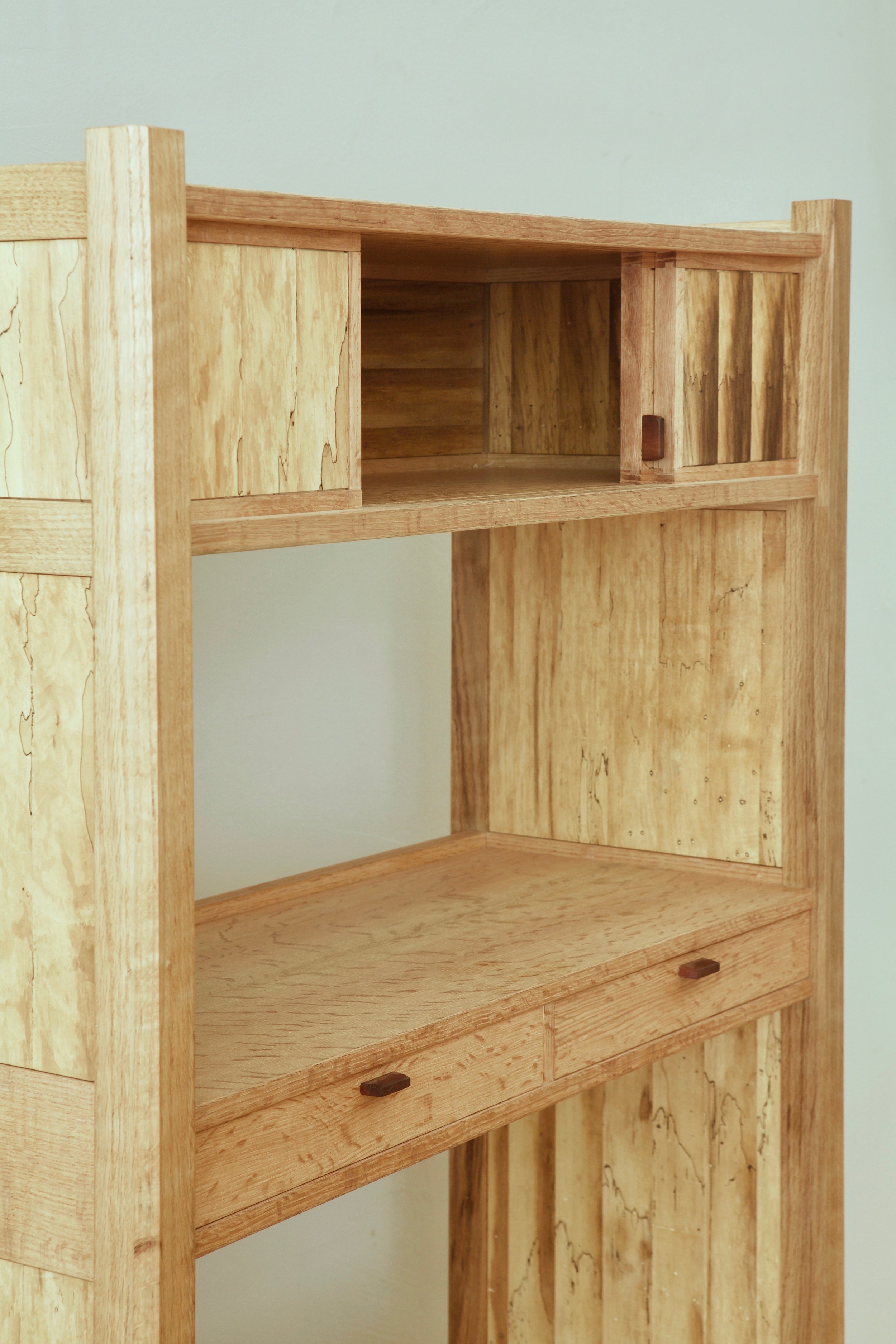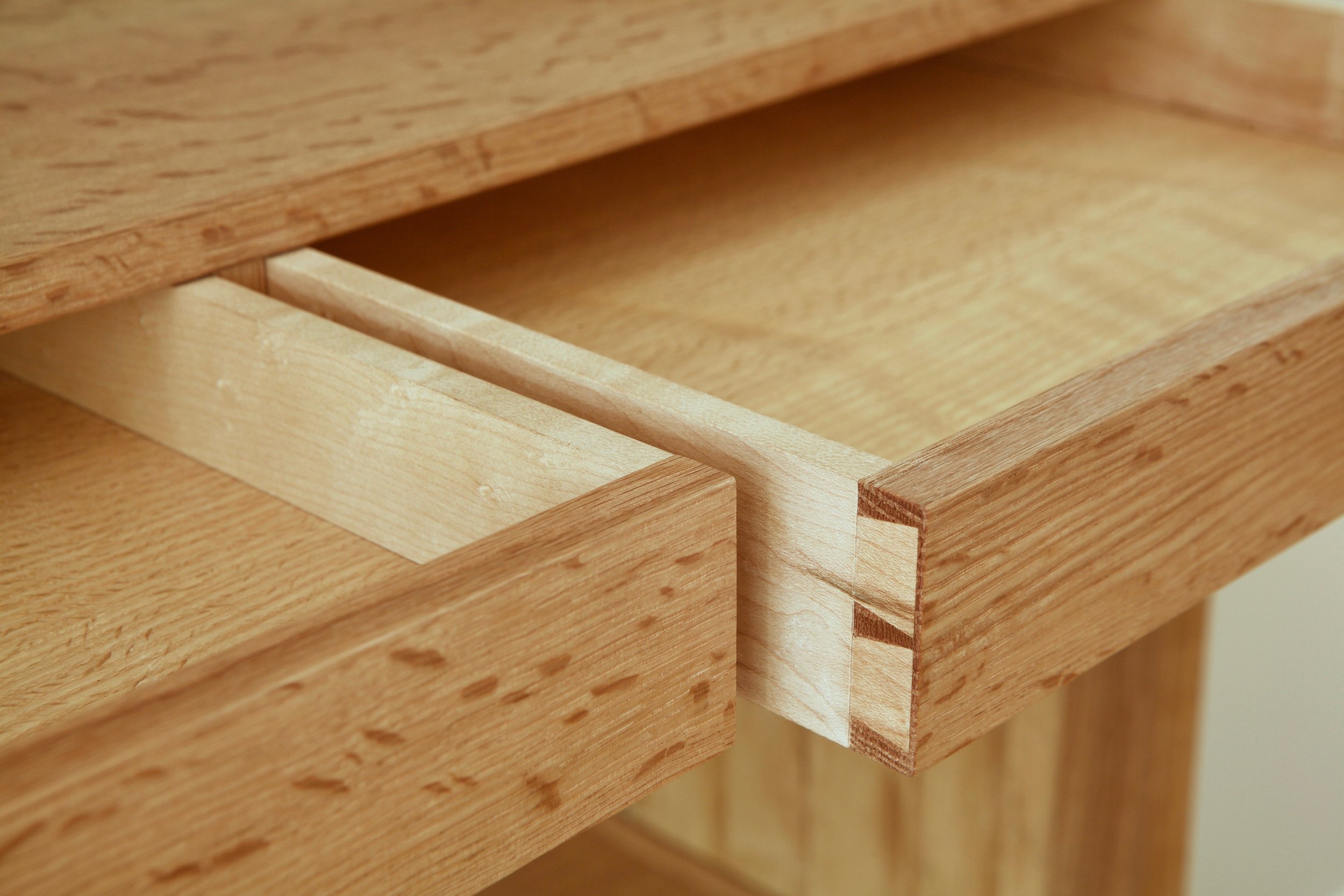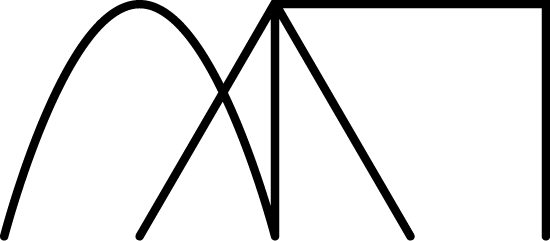








This bookcase was made in the winter of 2018, stemming from a desire to create a bookcase which might serve further as a cabinet and chest of drawers.

The piece is “post and panel” construction, a process in which the sides are constructed first with floating panels and long, full height legs, after which the shelves, back rails and interior components are made and assembled.

The bookcase has two complementary wood species, quartersawn red oak and spalted persimmon. The red oak shelves are veneered, and the legs and rails are solid. The persimmon floating panels are all solid, laid up in the “recorded” or sequential slip match pattern.

The three shelves each contain two drawers. This added feature brought significant complexity to the construction and joinery of the bookcase, but is (I think) its most practical and interesting feature.

The top shelves of the cabinet are enclosed, creating a small cabinet. The cabinet has two sliding doors and two fixed panels, which create a more protected and private space for storage.

There is traditional and non-traditional joinery throughout the bookcase. While the drawers feature traditional hand-cut dovetails, the carcase was assembled with a combination of dowels, splines and floating tenons.

The pulls were carved with a knife from manzanita, a favorite hardwood of mine native to the west coast. This dense maroon wood carves beautifully and holds the knifed facets perfectly.
